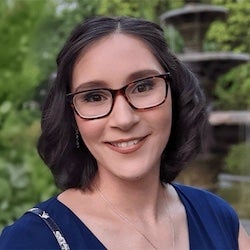By Hailey Reissman for Annenberg School for Communication News – originally published March 18, 2024
Climate change is an undeniably complex global problem. It’s often challenging for individuals to feel like they can make an impact — if they even know how. Should you be turning off your lights more? Recycling? Taking public transit? Purchasing carbon offsets? Even when people understand what they should be doing, they often default to inaction because the crisis can seem so distant from everyday life or scary to think about.
To figure out how to effectively motivate people toward climate change action, researchers in the Communication Neuroscience Lab at the Annenberg School for Communication, the Climate Communication Division of the Annenberg Public Policy Center, and the Penn Center for Science, Sustainability and the Media at the University of Pennsylvania are testing numerous methods to educate people about climate change and spur them to take action. Ranging from quizzes to imagination exercises, the researchers hope to determine which strategies are most effective and for whom.

“Climate change is primarily a problem of human behavior. As psychologists and communication scientists, we have the tools to discover how we can motivate people to feel like they can and should take action,’” says Allie Sinclair, study leader and the Joan Bossert Postdoctoral Research Fellow in the Communication Neuroscience Lab and the Penn Center for Science, Sustainability and the Media.
The interdisciplinary team has already run experiments with more than 6,000 people to test a range of different strategies informed by how the brain works.
After every intervention, participants are asked to rate their intentions to do things like engage in individual and community-focused climate mitigating actions, share articles about the climate crisis, or sign petitions about climate policy, as well as emotional aspects, such as how distant the climate crisis feels to them — in terms of time, geographic space, and personal impact.
“By using the tournament format, we can test many different behavioral interventions with the same group of people and see which intervention worked best for each goal, and for which demographic groups,” Sinclair says.
The team is using strategies that tap into a number of well-defined psychological processes.
For example, several interventions tap into people’s sense of what is relevant to them or to people they care about. In one intervention, participants reflect on why climate-related news matters to themselves or to people they know. Previous research from the team had people consider articles about health, climate change, voting, and COVID-19 and found that an individual is more likely to share information that they feel is meaningful to themselves or to the people they know.

Other groups of interventions are focused on imagining the future, and on the impact of different possible choices people can make.
The strategies focused on imagining the future are based on previous research led by Sinclair showing that when people fire up their imaginations to picture a COVID-related scenario — like a person contracting the virus at a party — it can change how dangerous they perceive various COVID-related risky behaviors to be, and whether or not they’re willing to do those risky behaviors. Finally, the strategies focused on impact are riffs on other commonly used intervention to engage people in climate action.
“We’ll take some of our top winners from this wave and pit them against each other, both to replicate our results and to see if combining them creates synergistic effects,” Sinclair says. “By testing them together, we hope to find an intervention that is even better at encouraging climate action.”
“Climate change is one of the most important issues of our time,” says Emily Falk, the senior author and lab director. “This work will provide actionable insights about what works and what doesn’t, so we can shape the future in positive ways.”
Members of the lab involved in the tournament include Director of the Communication Neuroscience Lab and Vice Dean of the Annenberg School Emily Falk, Research Director Dani Cosme, Senior Research Coordinator José Carreras-Tartak, Annenberg doctoral student Kirsten Lydic, as well as Penn Psychology doctoral students Taurean Butler and Christian Benitez. The team is also collaborating with Presidential Distinguished Professor Michael Mann and Administrative Coordinator Heather Kostick at the Penn Center for Science, Sustainability, and the Media.
This material is based upon work supported by the Defense Advanced Research Projects Agency (DARPA) under Contract No. 140D0423C0048. Any opinions, findings and conclusions or recommendations expressed in this material are those of the author(s) and do not necessarily reflect the views of the Defense Advanced Research Projects Agency (DARPA); or its Contracting Agent, the U.S. Department of the Interior, Interior Business Center, Acquisition Services Directorate, Division V.











